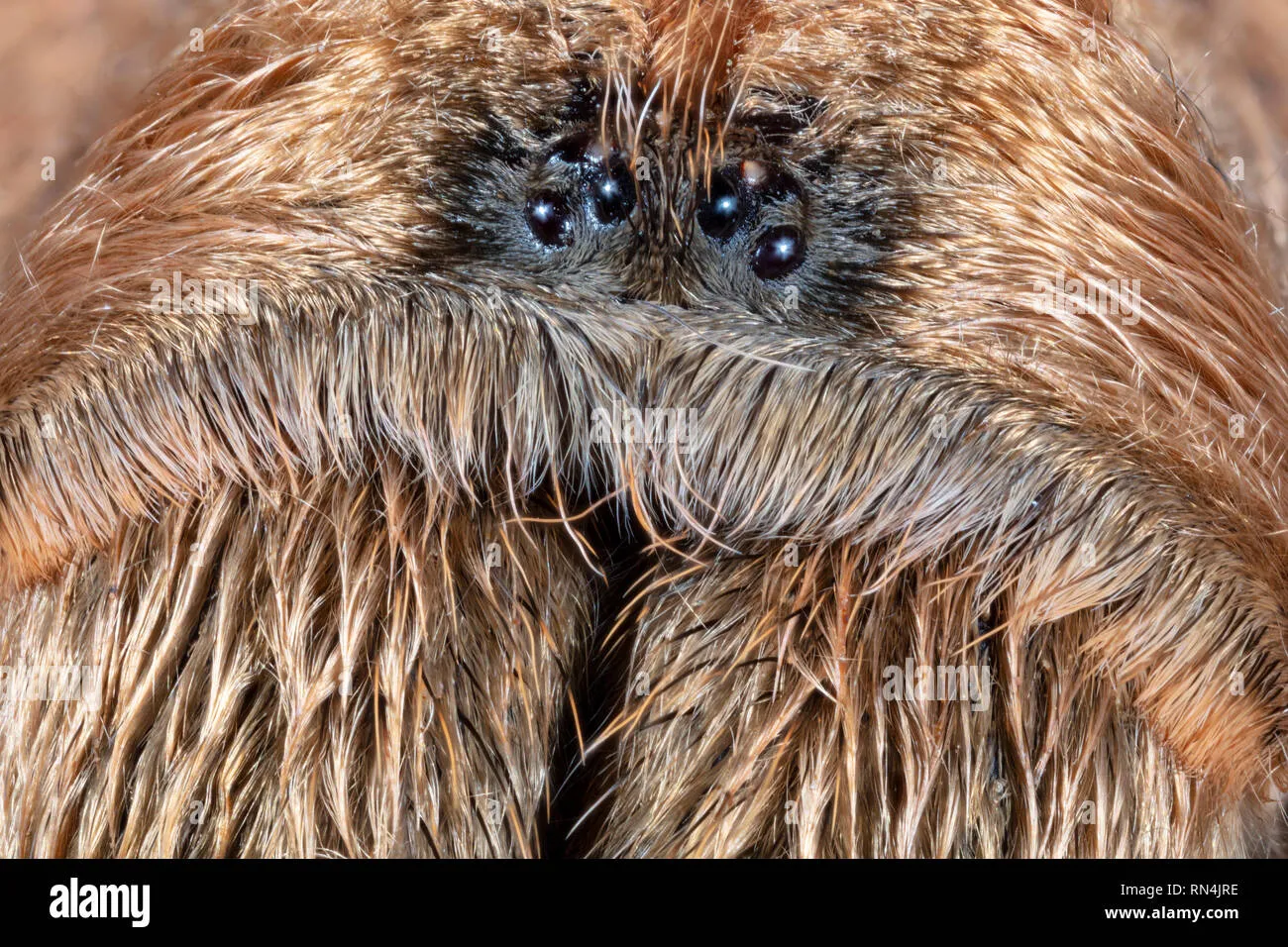What is a Blond Tarantula?
The Blond Tarantula, scientifically known as Aphonopelma chalcodes, is a captivating species of tarantula native to the southwestern United States and parts of Mexico. This arachnid is a popular choice for pet owners due to its relatively docile nature and striking appearance. Their golden-brown coloration, coupled with their manageable size, makes them an attractive addition to any reptile or invertebrate enthusiast’s collection. They are not typically aggressive, but like all tarantulas, they should be handled with care and respect. Their lifespan can be quite impressive, making them a long-term commitment for those who choose to keep them.
Appearance and Identification
Identifying a Blond Tarantula is fairly straightforward, thanks to its distinctive appearance. Adults display a beautiful golden-brown hue across their carapace, legs, and abdomen. The coloration can vary slightly depending on the individual and its environment, ranging from a light tan to a richer, more saturated brown. They are covered in fine hairs that add to their soft, inviting look. Juvenile tarantulas may have slightly different coloration, often appearing darker, but as they mature, their characteristic blond tones become more prominent. The overall appearance is robust, and the legs are proportionate to their body size, giving them a sturdy, grounded look.
Size and Lifespan
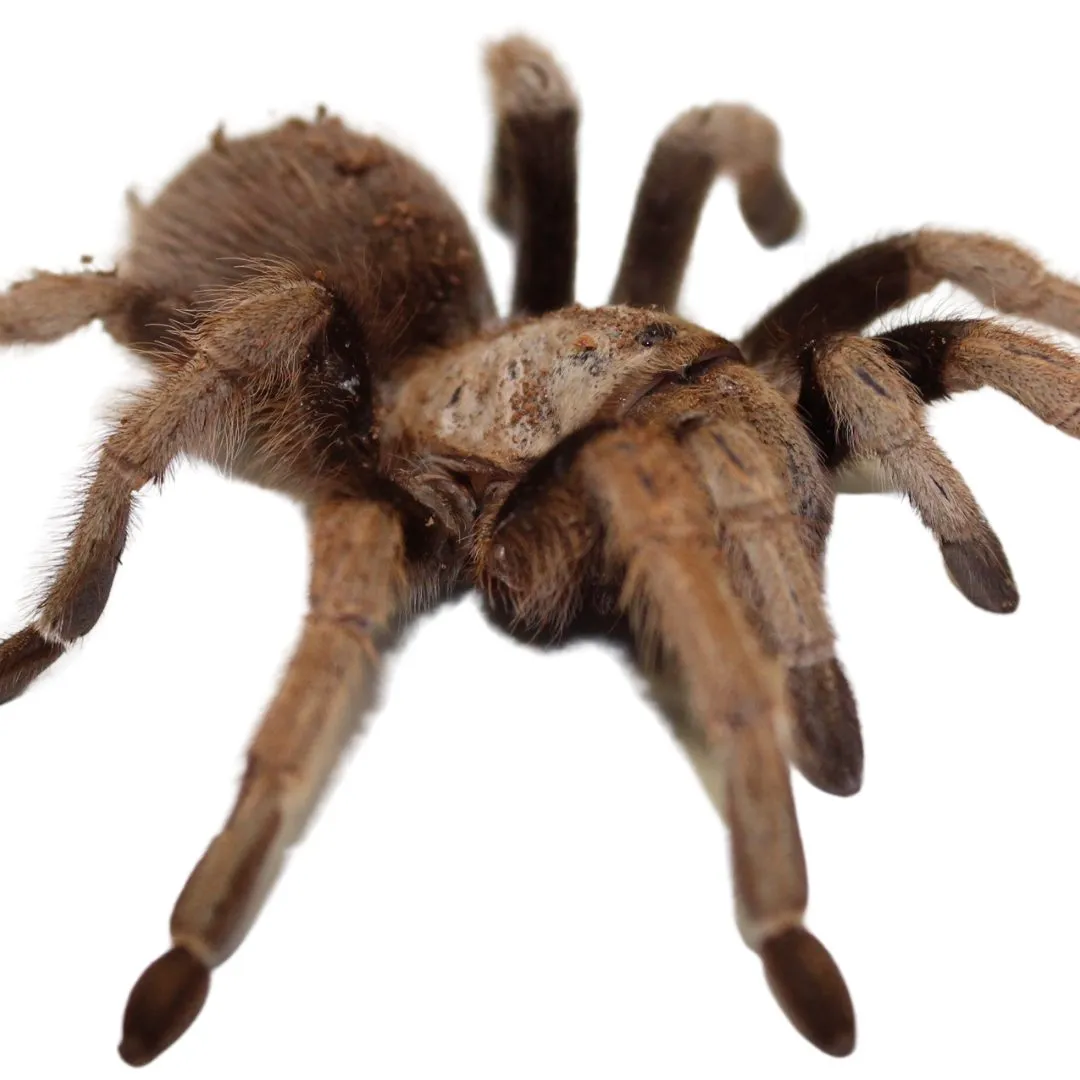
Blond Tarantulas are medium-sized tarantulas, with females generally growing larger than males. The females can reach a leg span of up to 6 inches (15 cm), while males are typically slightly smaller. Their lifespan is a significant aspect of their appeal, as females can live for up to 20 years or more under optimal conditions. Male Blond Tarantulas, however, have a shorter lifespan, often living only a few years after reaching maturity. This longevity makes them a rewarding pet for those who can provide the necessary care for an extended period. The size and lifespan make them a fascinating subject to study.
Habitat and Natural Range
Understanding the natural habitat of the Blond Tarantula is crucial for providing the best care in captivity. These tarantulas are native to the arid and semi-arid regions of the southwestern United States, including Arizona, and parts of New Mexico, California, and also found in northern Mexico. Their natural habitat consists of desert scrub and grasslands where they build burrows in the ground. They are well-adapted to the hot and dry conditions of their environment. Knowing their natural range allows you to understand the climate and conditions they thrive in, which is key to replicating those conditions in a captive setting.
Where They Live
In their natural environment, Blond Tarantulas live in burrows they create or find under rocks, in the ground, or amongst vegetation. These burrows provide shelter from the harsh desert climate and protection from predators. They are ambush predators, waiting patiently inside or near their burrows for unsuspecting prey to pass by. These burrows are meticulously constructed, providing a safe haven for the tarantula to molt, rest, and raise their young. The construction of the burrow is important to its survival as the natural conditions can be challenging.
Ideal Environment
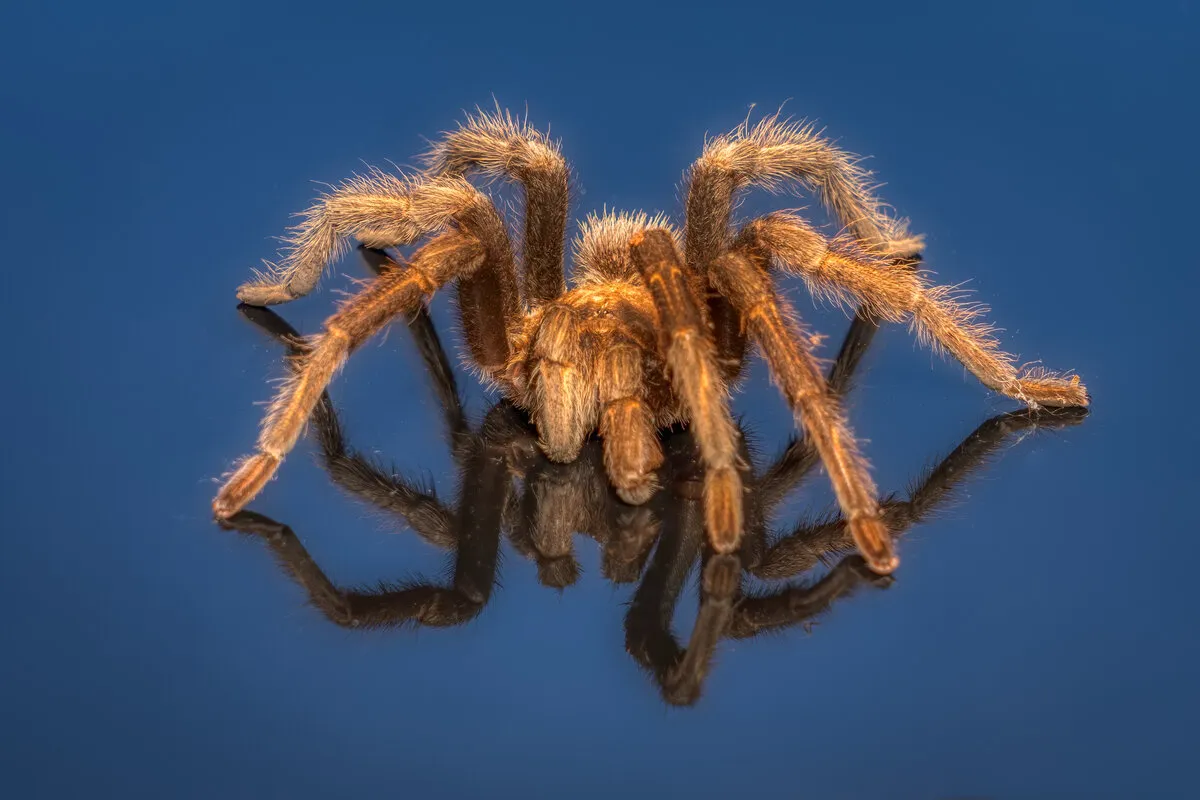
To replicate the ideal environment for a Blond Tarantula in captivity, you should create a desert-like setup. This includes a terrarium with a substrate of coconut fiber, vermiculite, or a mix of both, which helps to retain some humidity while allowing for burrowing. Provide a shallow water dish for hydration and maintain a temperature gradient, with the warm side around 80-85°F (27-29°C) and the cooler side around 70-75°F (21-24°C). Ensure the enclosure has adequate ventilation, but avoid excessive drafts. Decorate the enclosure with rocks, pieces of bark, or artificial plants to provide hiding spots and mimic their natural habitat.
Behavior and Temperament
Blond Tarantulas are generally known for their docile temperament, making them a good choice for beginner tarantula keepers. They are not typically aggressive and prefer to retreat and hide if they feel threatened. However, it’s essential to remember that each tarantula has its own personality, and some individuals may be more defensive than others. Their behavior is usually predictable, and they spend most of their time in or near their burrows. They are nocturnal creatures, meaning they are most active during the evening and night. This behavior is well-suited to their hunting strategy.
Defensive Mechanisms
Despite their generally docile nature, Blond Tarantulas possess several defensive mechanisms. Their primary defense is their urticating hairs, which they can flick off their abdomen if they feel threatened. These hairs cause irritation upon contact with skin and eyes. They may also display a threat posture, rearing up on their hind legs with their fangs exposed. While bites are rare, they are possible, so it’s important to handle them with care and avoid sudden movements. Understanding their defensive mechanisms allows you to handle them in a safer, more responsible way and to provide the best care.
Hunting and Feeding Habits
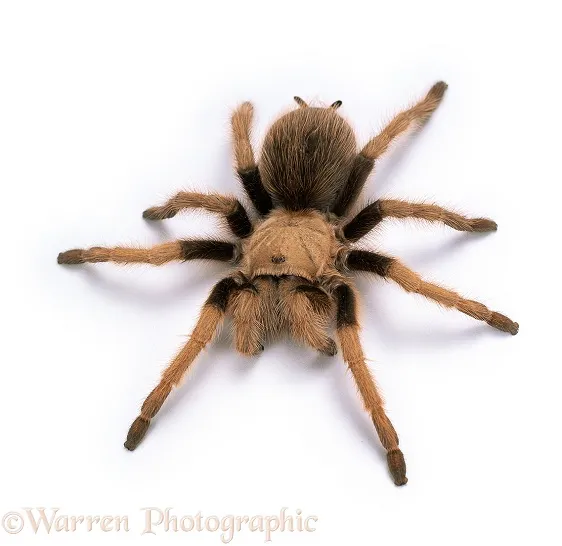
Blond Tarantulas are ambush predators, meaning they wait for prey to come to them. In the wild, they feed on insects, small lizards, and other invertebrates. They are opportunistic feeders, and their diet is typically based on what is readily available in their environment. They detect prey through vibrations in the ground and around their burrow. Once prey is within range, they quickly pounce and inject venom to immobilize it. Their hunting style showcases their patience and natural instinct to survive. This natural instinct is very fascinating.
Diet in Captivity
In captivity, Blond Tarantulas thrive on a diet of insects such as crickets, mealworms, and roaches. The size of the prey should be appropriate for the tarantula’s size; juveniles should be fed smaller insects. Feed them 1-2 times per week, and ensure they have access to fresh water at all times. Avoid overfeeding, as this can lead to obesity. Remove uneaten food within 24 hours to prevent the growth of mites or mold. A varied diet of different insects can help ensure that the tarantula receives all the necessary nutrients. Always make sure the food is healthy for them.
Reproduction and Life Cycle
The reproduction and life cycle of the Blond Tarantula is a fascinating process. Once the female is mature, the male will attempt to mate with her. This is a delicate process, as the female may see the male as a meal. The male creates a sperm web and transfers his sperm to his pedipalps to deliver them to the female. If successful, the female will lay eggs in an egg sac, which she protects until the spiderlings hatch. The study of their breeding behavior is a great way to learn about nature.
Mating Rituals
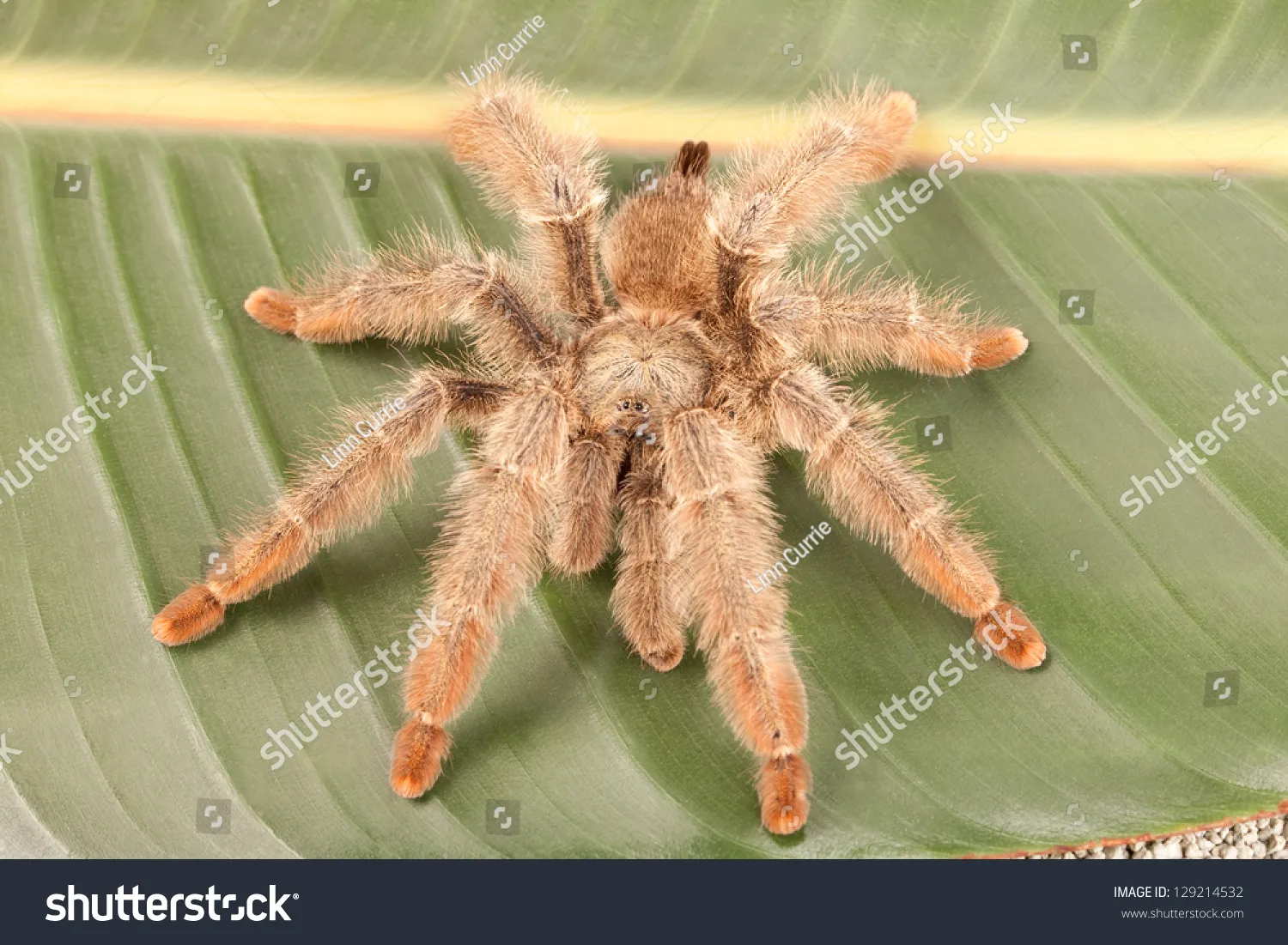
Mating rituals in Blond Tarantulas involve the male approaching the female cautiously, often drumming on the ground to signal his intentions. The male will often use his pedipalps to introduce sperm into the female. The male must avoid being attacked and eaten by the female. Successful mating requires the right timing and the right environment. The male must also ensure his approach is clear. The goal of the mating ritual is to continue the species.
Egg Sac and Spiderlings
After mating, the female Blond Tarantula will create an egg sac, which can contain hundreds of eggs. She diligently guards the egg sac, protecting it from harm. The spiderlings hatch within the egg sac and molt several times before emerging. At this point, the spiderlings are small and vulnerable. They are often kept together for some time before being separated. The young spiderlings are fascinating to observe.
Care and Handling
Proper care and handling are essential to ensure the well-being of your Blond Tarantula. Their environment, diet, and overall health are key elements. Handling should be minimized unless necessary. It’s important to provide a suitable habitat. Understanding how to care for them will lead to a happy pet. Providing the best care should be a priority.
Enclosure Setup
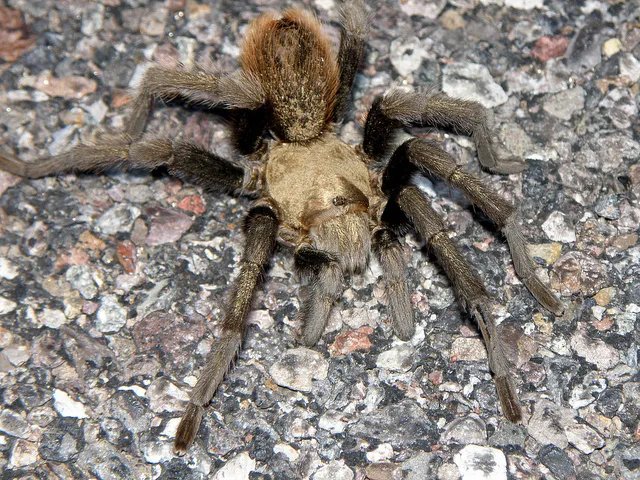
The enclosure should be appropriately sized, considering the tarantula’s leg span. A 10-gallon tank is suitable for juveniles, while adults will need a 20-gallon or larger tank. The enclosure should have a secure lid to prevent escapes and adequate ventilation. Provide a substrate layer of several inches to allow for burrowing. The substrate is very important to their well being. Include a water dish, a hide or burrow, and some decorations. Clean the enclosure regularly and spot-clean it as needed. The environment of the tank is very important.
Feeding and Watering
Feed your Blond Tarantula with appropriately sized insects, such as crickets, mealworms, and roaches. Juveniles should be fed 2-3 times per week, while adults can be fed once a week or every other week. Always provide fresh water in a shallow dish. Remove any uneaten food within 24 hours to prevent the growth of mold and mites. The feeding schedule and types of food provided should be considered. Their diet should vary, as this will provide essential nutrients for the tarantula.
Health and Common Issues
Like any pet, Blond Tarantulas can experience health issues. Being aware of common problems and how to address them can help ensure a long, healthy life. Regular observation and a clean environment are key to maintaining the well-being of your pet tarantula. Providing a good environment is critical to their health and well being. There are several key items to focus on.
Common Diseases
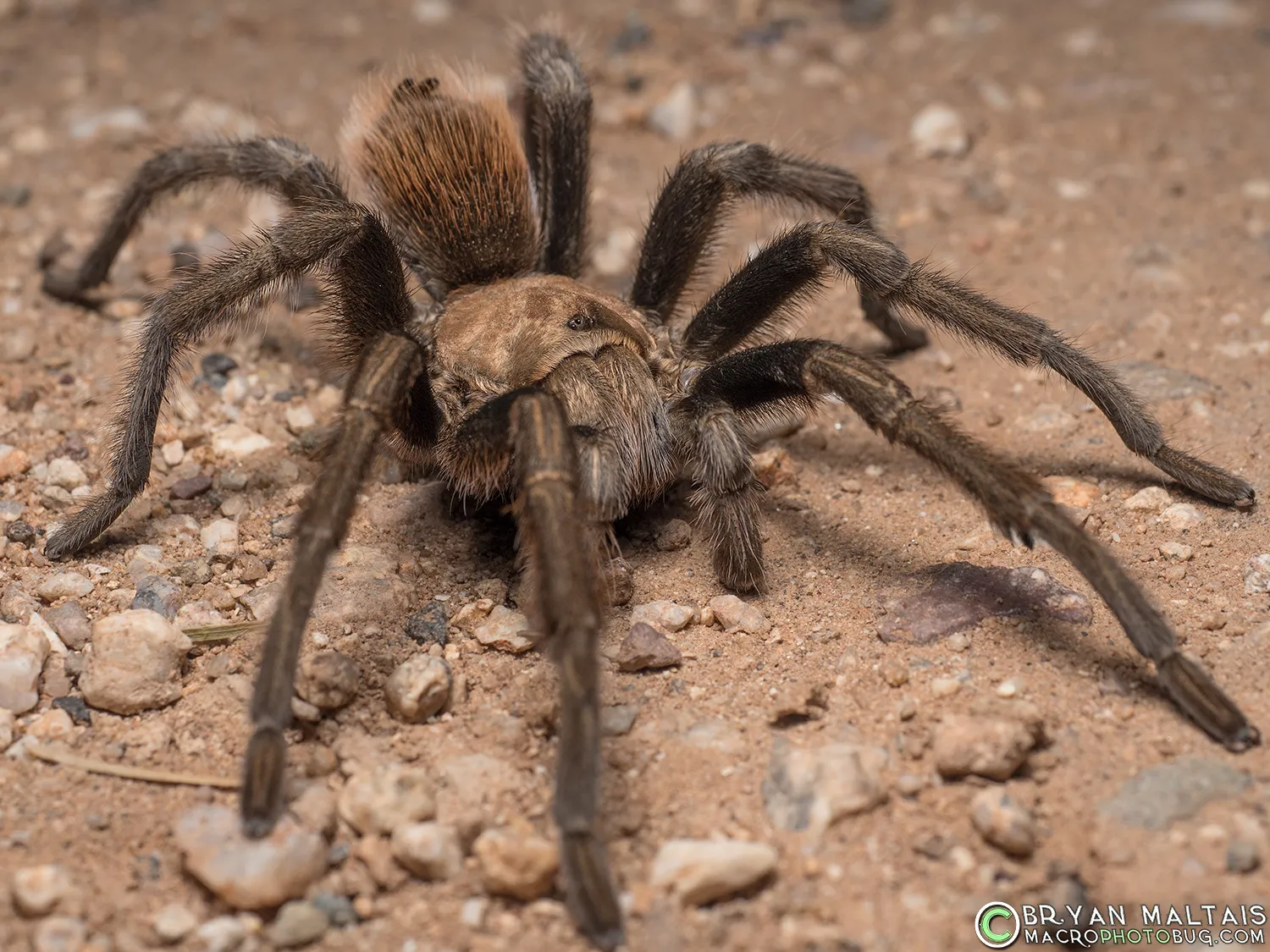
Common health issues include parasites, fungal infections, and dehydration. Parasites can be introduced through live food or contaminated substrate. Fungal infections can occur in overly humid environments. Dehydration can result from a lack of access to fresh water. Symptoms to watch for include lethargy, loss of appetite, and unusual behaviors. If you suspect your tarantula is ill, consult a veterinarian experienced in treating exotic animals.
Preventative Measures
Preventative measures include providing a clean, well-ventilated enclosure, a proper diet, and fresh water. Quarantine new tarantulas before introducing them to your collection. Inspect live food for parasites. Monitor humidity levels and adjust ventilation as needed. Regular cleaning of the enclosure can reduce the risk of infection. Maintaining a suitable environment is key to ensuring the health and safety of the tarantula. Following these measures can reduce the risk of common issues.
Conservation Status and Threats
The Blond Tarantula is not currently listed as endangered, but like many species, it faces potential threats in the wild. Habitat loss due to urbanization and agriculture poses a risk. Collection for the pet trade, if unregulated, can also impact wild populations. Conservation efforts focus on protecting their natural habitats and promoting responsible pet ownership. Continued monitoring of wild populations helps to assess the health of their habitats. Responsible ownership of this species is essential.
